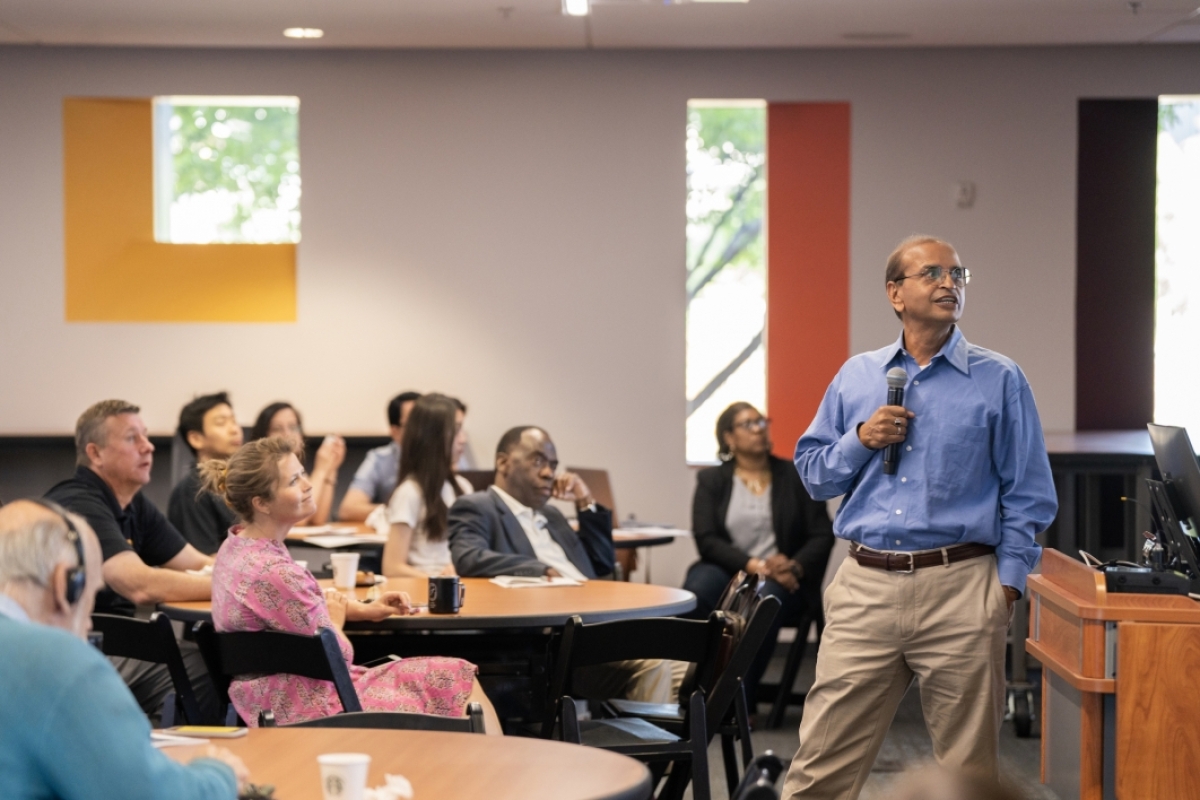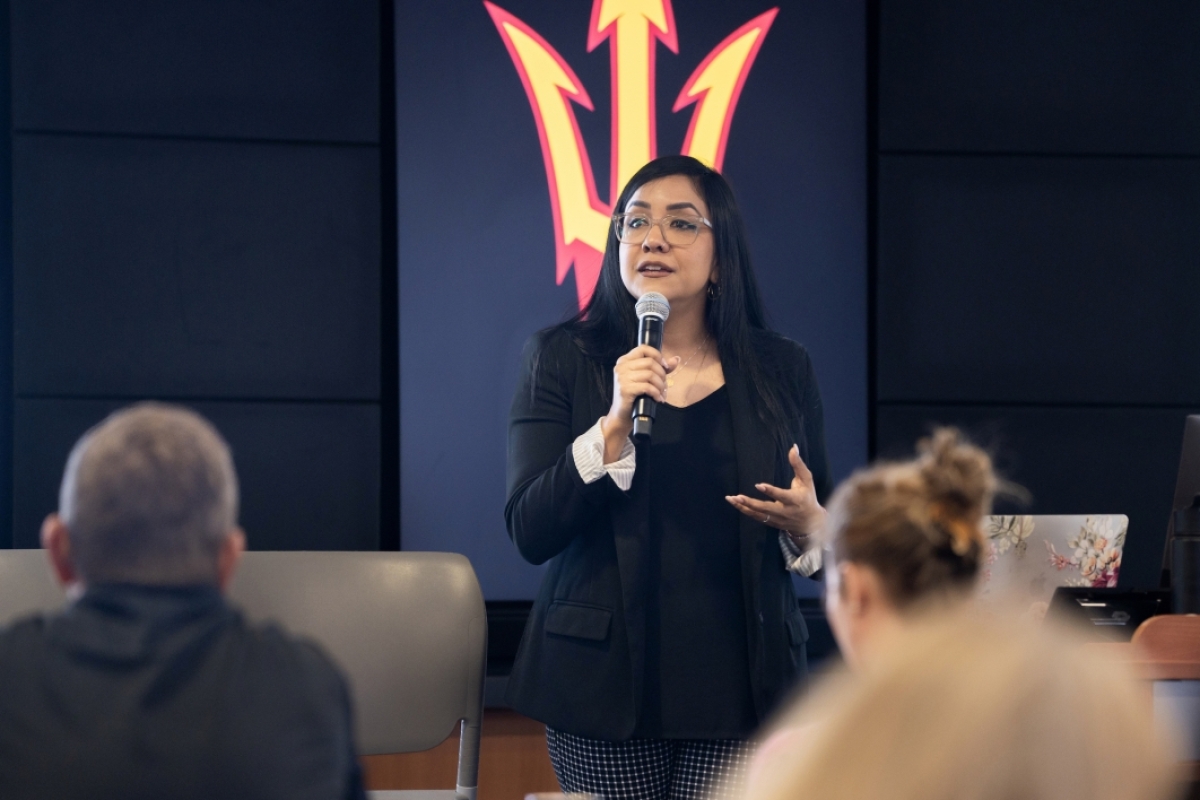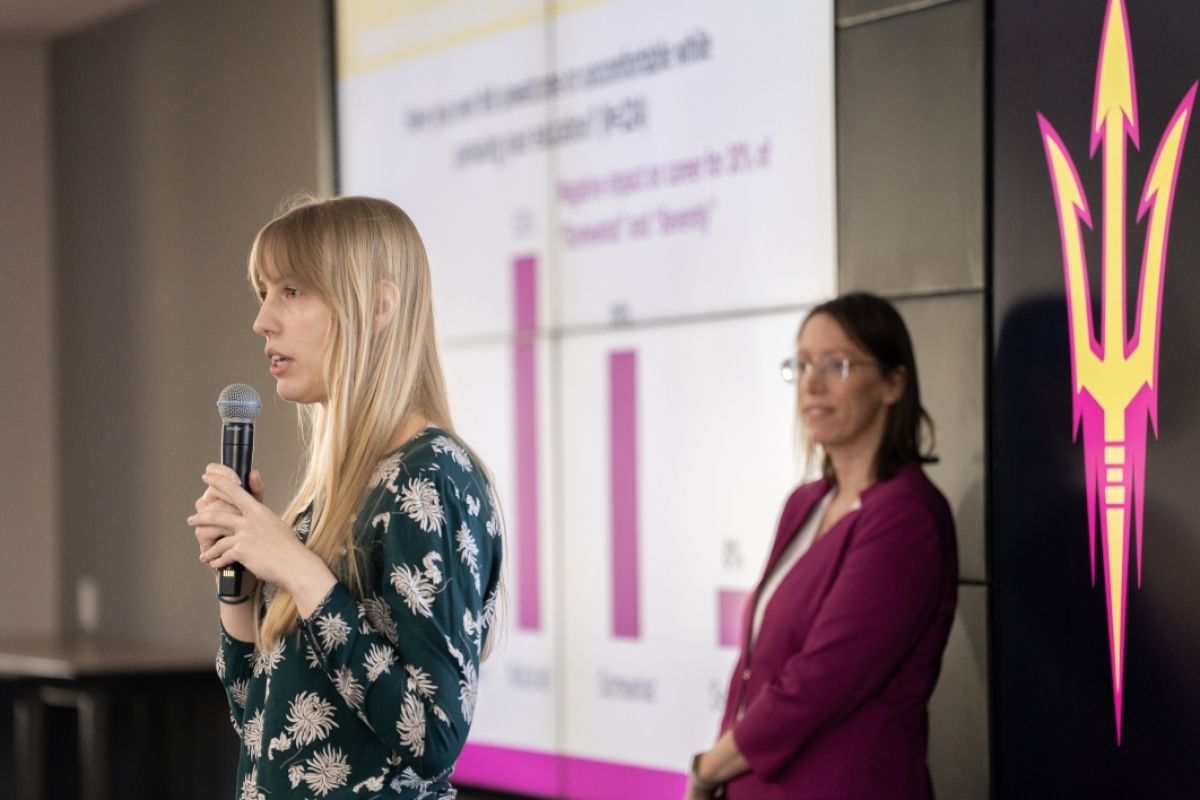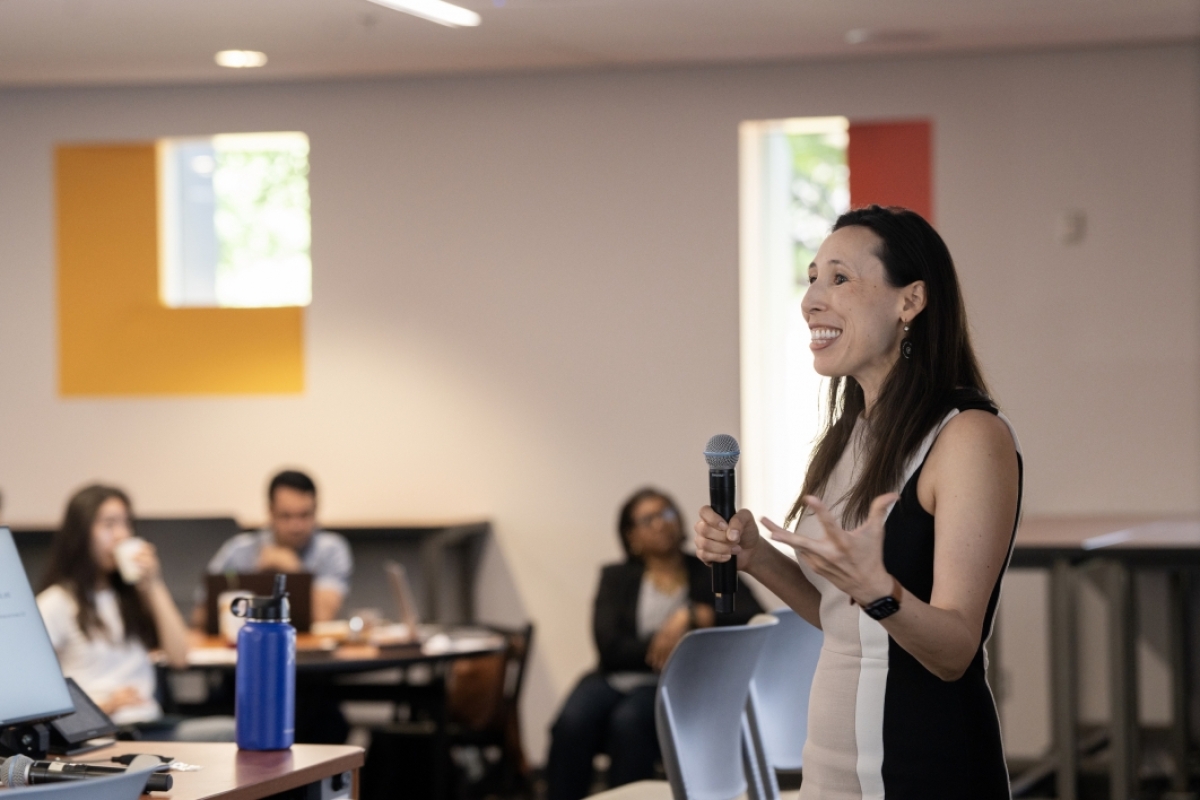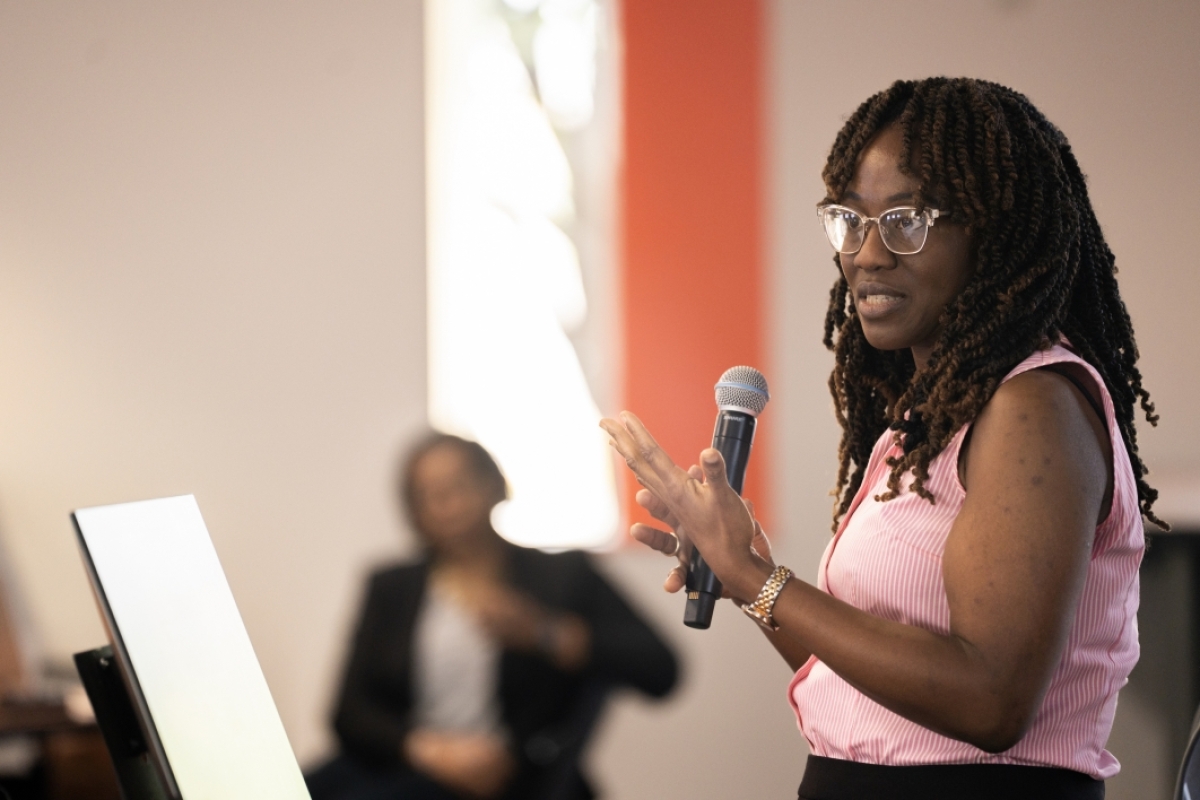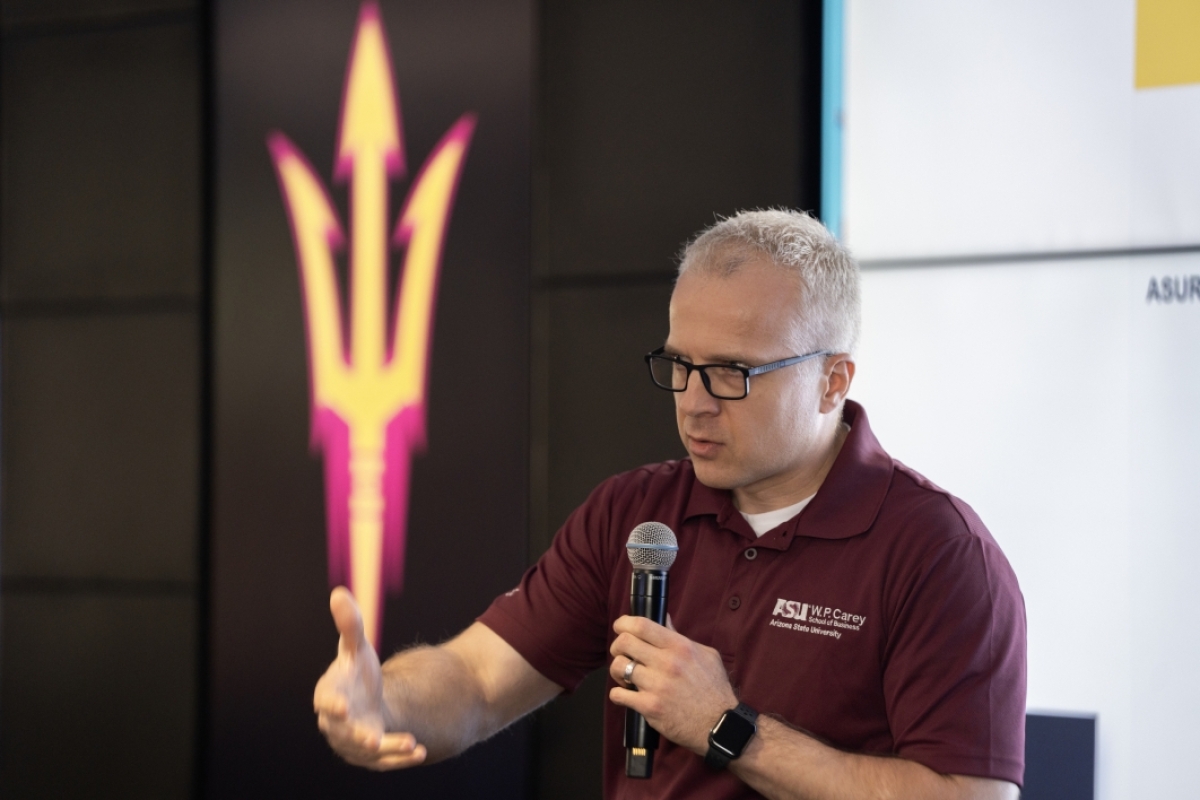W. P. Carey School celebrates research fostering inclusive excellence
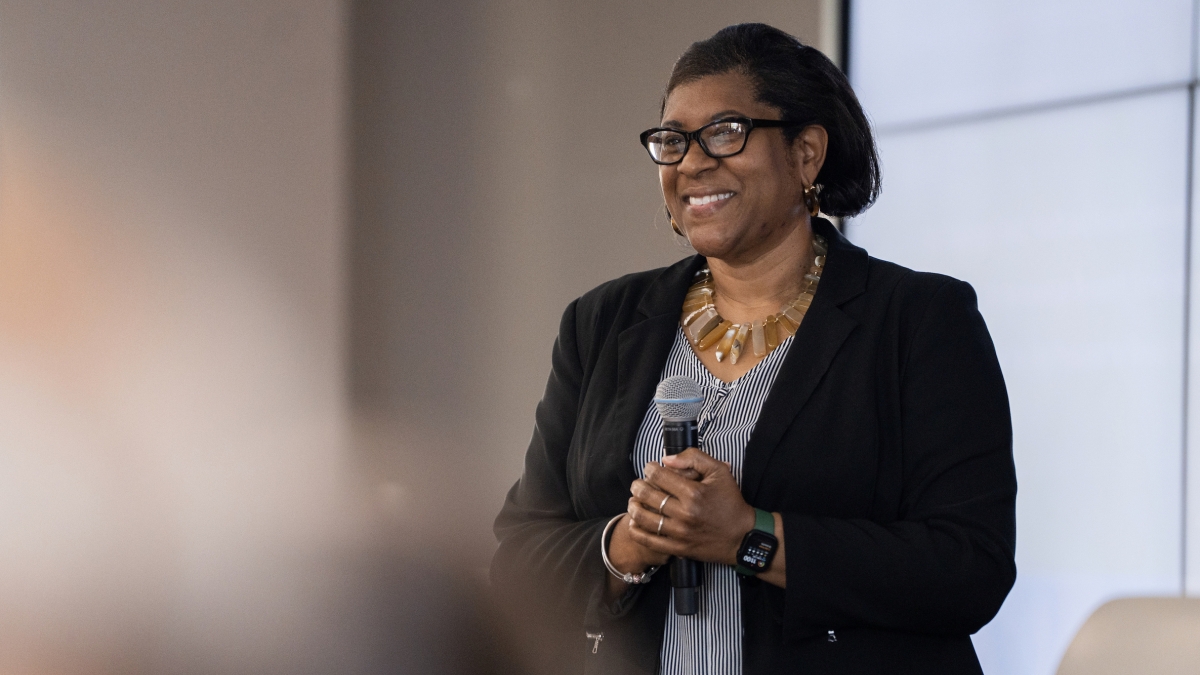
Alyssa Robillard, associate professor in the Edson College of Nursing and Health Innovation, presenting her research on health equity and the need to overcome economic and social obstacles in obtaining care and eliminating disparities. Photo courtesy Shelley Marie Valdez/W. P. Carey School of Business
The W. P. Carey School of Business recently hosted an inaugural summit designed to elevate cross-disciplinary research and dedicated service, primarily featuring historically underserved communities within the classroom, workplace and across industries.
“This summit brought together scholars and practitioners from different schools, disciplines and units across the university. It embodies W. P. Carey’s commitment to thought leadership in diversity, equity and inclusion,” said Ohad Kadan, the Charles J. Robel Dean, professor of finance and W. P. Carey Distinguished Chair. “I am very excited and proud of this event.”
Last summer, Kadan was named dean of the business school and has since outlined a five-year strategic plan that describes diversity, equity and inclusion as a core tenant in the school’s commitment to access, success and cutting-edge research.
Arizona State University at large is also repositioning diversity, equity and inclusion initiatives using an inclusive excellence framework, integrating these efforts into the core organizational functions of the university, and inspiring practices and philosophies that generate greater outcomes.
“I have a sincere admiration for your undertaking of this endeavor today. It is key to the success of the school and the advancement of inclusive excellence at the university,“ said Lara Ferry, associate vice president of research within the Knowledge Enterprise. “We admire and support the work you are sharing in this space and are here to assist in any way and at any time.”
The presentations included faculty research at every career stage, staff and students who respectively represented the W. P. Carey School of Business, College of Health Solutions, School of Social Transformation, Edson College of Nursing and Health Innovation and the Center for Broadening Participation in STEM.
Among those featured at the summit include Professor Ashok Mishra, the Kemper and Ethel Marley Foundation Chair in Food Management at the W. P. Carey Morrison School of Agribusiness, who explained how credit could affect the productivity and profitability of farming households. Mishra’s research identified systemic discrimination, including the deprivation of federal services that led to a decline in Black farmers. He noted that improved access to credit is paramount to the return of diverse representation among farmers.
Alyssa Robillard, associate professor at the Edson College of Nursing and Health Innovation, said that a search for the definition of health equity would return over a million results but, in essence, refers to a condition where everyone has a fair and just opportunity to attain their greatest level of physical condition, acknowledging the need to overcome economic and social obstacles in obtaining care and eliminating disparities. Her presentation emphasized that people with the lived experience of a disease or social reality should drive decisions related to policies and programs that affect them.
Mara Lopez, senior research program manager at the Center for Broadening Participation in STEM, outlined the diligent work of the center to foster environments that positively impact the experiences of learners from historically marginalized backgrounds both directly and through the provision of culturally responsive and student-centered professional development opportunities.
The summit also included the following perspectives:
Diversity and inclusion in agricultural and applied economics presented by Ekaterina Stoliarova, PhD student, and Carola Grebitus, associate professor and Dean's Council Distinguished Scholar at the W. P. Carey Morrison School of Agribusiness.
Responses to gender-based price variation presented by Adriana Samper, associate professor at the W. P. Carey Department of Marketing.
Fostering inclusive communities through data-informed strategies for effective systems change presented by Mako Ward, assistant professor of women and gender studies and African and African American studies at the School of Social Transformation.
SNAP participation and medication adherence among older Black Medicaid-insured individuals with hypertension presented by Chinedum Ojinnaka, assistant professor at the College of Health Solutions.
Increasing the representation of Black CPAs in the accounting profession presented by Eldar Maksymov, associate professor at the W. P. Carey School of Accountancy.
More Local, national and global affairs

ASU Lodestar Center supports Tucson's vibrant nonprofit sector with research, training
If all of the nonprofits in Arizona were grouped together as an industry, they would be the sixth-largest sector in the state in…

ASU Library collection captures robust history of Arizona
Editor’s note: This is part of a monthly series spotlighting ASU Library’s special collections throughout 2024.Copper,…

ASU helps University of Guyana faculty earn doctoral degrees in expedited program
Shenella Benjamin and Norwell Hinds joined hundreds of other Sun Devils in receiving PhDs from Arizona State University this week…
